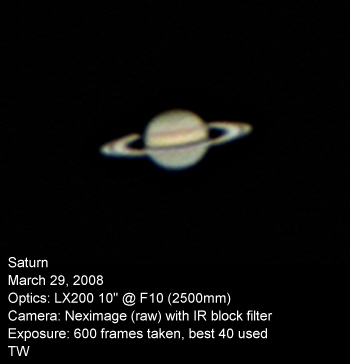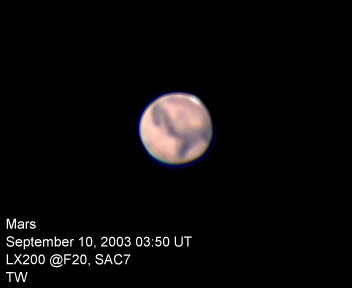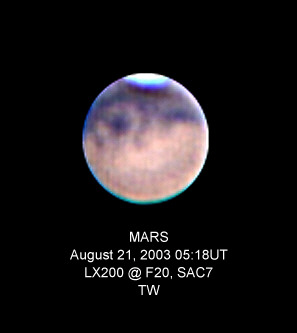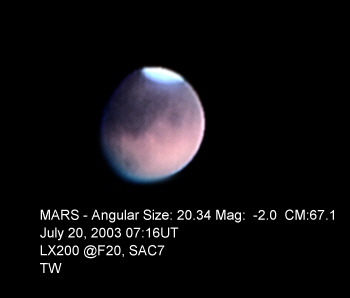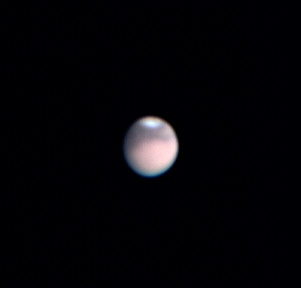Image Gallery - Planets
 |
| 10/10/03 Mars is shrinking fast! | 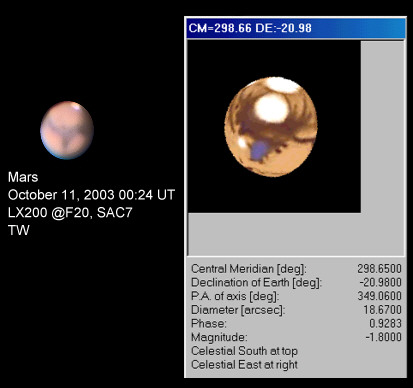 |
| 9/13/03 Yes Virginia, Mars does spin on it's axis. In fact, the Martian day is almost the same length as that of Earth, 24 hours 37 minutes and 48 seconds. I decided to do a movie by taking shots every 15 minutes or so. It was mostly clear but I did battle clouds a couple of times that caused some delay between certain frames. The image to the right is the best of the bunch. Click on it to see the Mars movie, and all the other frames that were used to create it. |
| 08/29/03 Decent detail in this one but the jet stream is playing havoc with the seeing. Looking at Mars has been like looking through moving water. I've included a map and data from a nice freeware program called Mars Previewer II. At one point I guess they had an infected version out there but I picked this one up clean from an astronomy club site. |
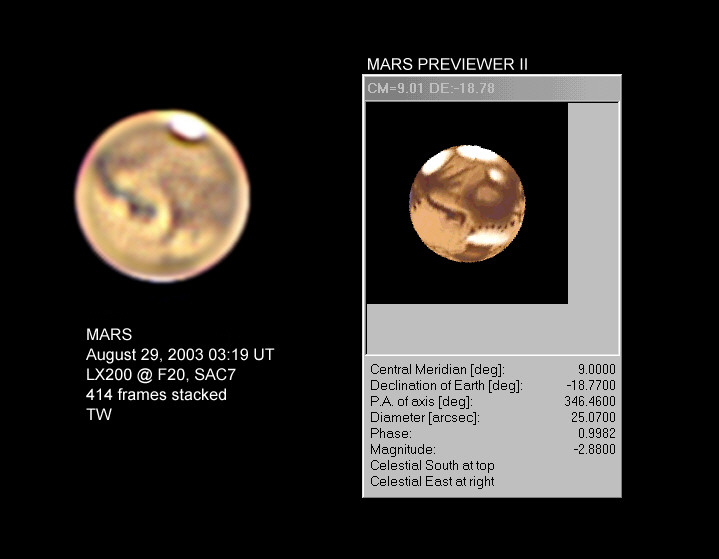 |
| 8/20/03 It's almost as close and as big as it's going to get. Seeing was very unsteady, like looking through a fish bowl, but it was clear, a refreshing change from the near constant clouds and rain we've had for the last month. |
|
| 7/20/03 More Mars! This one resampled pretty well... |
|
| 7/13/03 I got some good data on this night
under the full moon. I used a tool that's new to
me, Registax, to align and
register the images. It does all the quality
selection work I used to spend hours doing
automatically. It's an excellent tool and has
many features I have yet to explore. Click on this image of Mars to see the processing steps. |
|
| 7/5/03 Here's another, this one is rather ugly, poor seeing conditions followed by over sampling and over processing. Rumor has it a Martian dust storm is starting up, hope it doesn't go global before I get some better pics! | 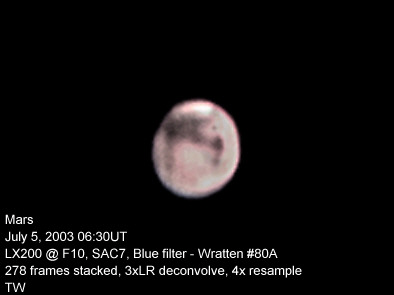 |
| 6/21/03 Let the Mars apparition begin! This is my first ever image of the red planet, taken at F20 with the SAC7 camera. Images should be getting more detailed as opposition approaches in August. This year Mars will be closer to Earth than it has been in about 60,000 years! Don't miss it! | 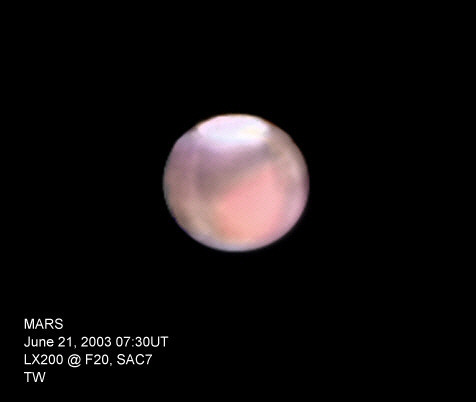 |
| 1/26/03 Yea! My first decent Jupiter shot with the Great Red Spot just left of top center. I took 20 second movies every five minutes for 2 hours. This was the best of what I got. Click Jupiter to watch it spin! | 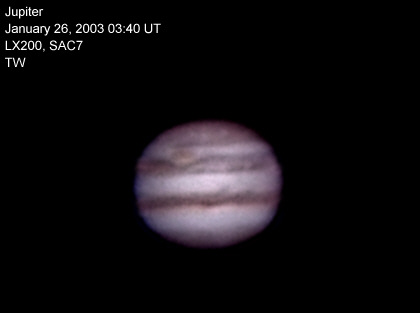 |
| 1/27/03 Pretty happy about how this one came out! This image really highlights the 3 dimensional nature of this captivating planet. To create this image I took several 20 second AVIs and spent a great deal of time picking out the best 30 of almost 900 frames. The good material required very little processing, but a Lucy-Richardson deconvolve did wonders for bringing out the Cassini division and weather bands. | 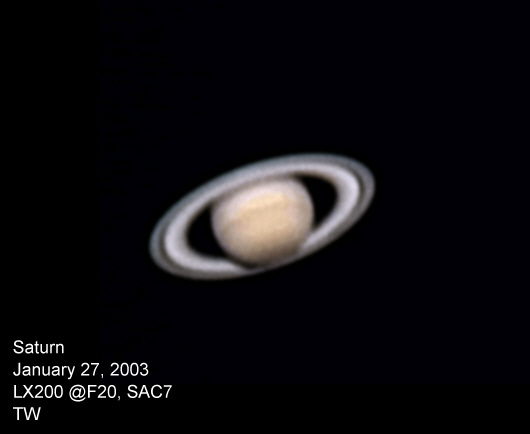 |
| 3/6/03 My first solar system object image taken with the ST8i. I'm used to video style cameras. The ST8i takes individual frames instead of .AVI movies. I limited the area of exposure to 1/4 of the chip to speed download times, I also used a dark green filter and the shortest exposure time (0.01s) to obtain 20 images which were then stacked and combined in Astrostack. | 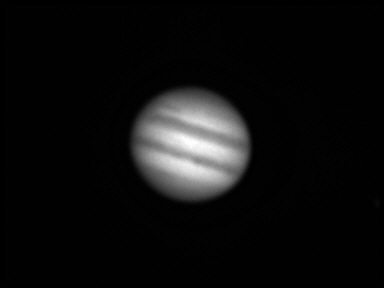 |
| A little Saturn and moons pic, the moon Titan which has a thick atmosphere is seen at lower left... | 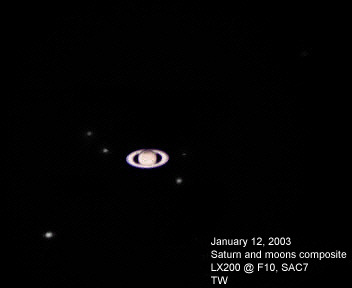 |
| Saturn
and Jupiter were just about gone when I bought
the SAC7, and were completely gone by the time I
got the LX200. So, I haven't got much material. I
have managed to take a couple of decent Saturn
images with the LX200. |
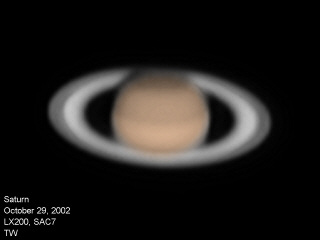 |
| The
Cassini Division is a little better defined in
this image. I'm looking forward to doing lots more high magnification planetary work this Fall and Winter. I'm also -really- looking forward to the close view of Mars we'll be getting in 2003. |
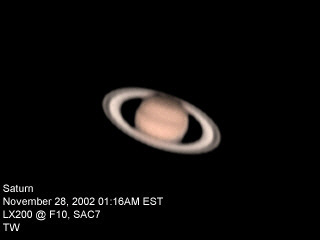 |
| This was a fun shot to take with the ETX70 and SAC7. It's a composite of an extended exposure picking up the moons combined with an image of the planet taken via .AVI | 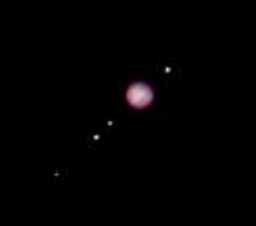 |
| The planet Venus goes through phases just like the Moon does. Depending on the angle between Earth, Venus, and the Sun, it's shadow blocks our view, showing us only an illuminated fraction of the planet's disk. | 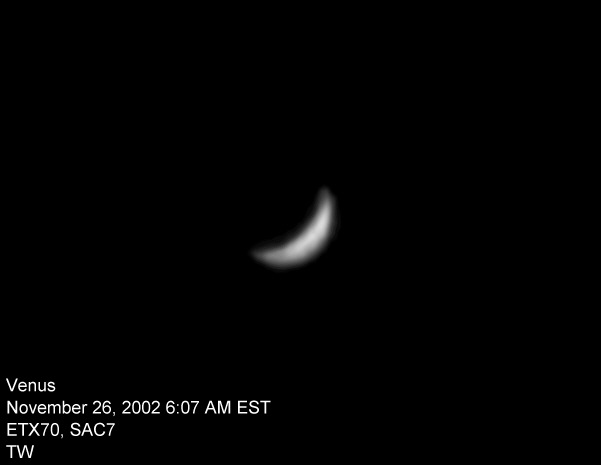 |
| My first exposure to imaging was doing the planets with the ETX70 and Meade Electronic Eyepiece. | 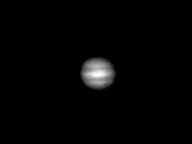 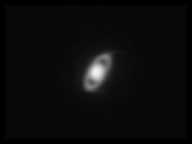 |
Learn More about the Planets.

